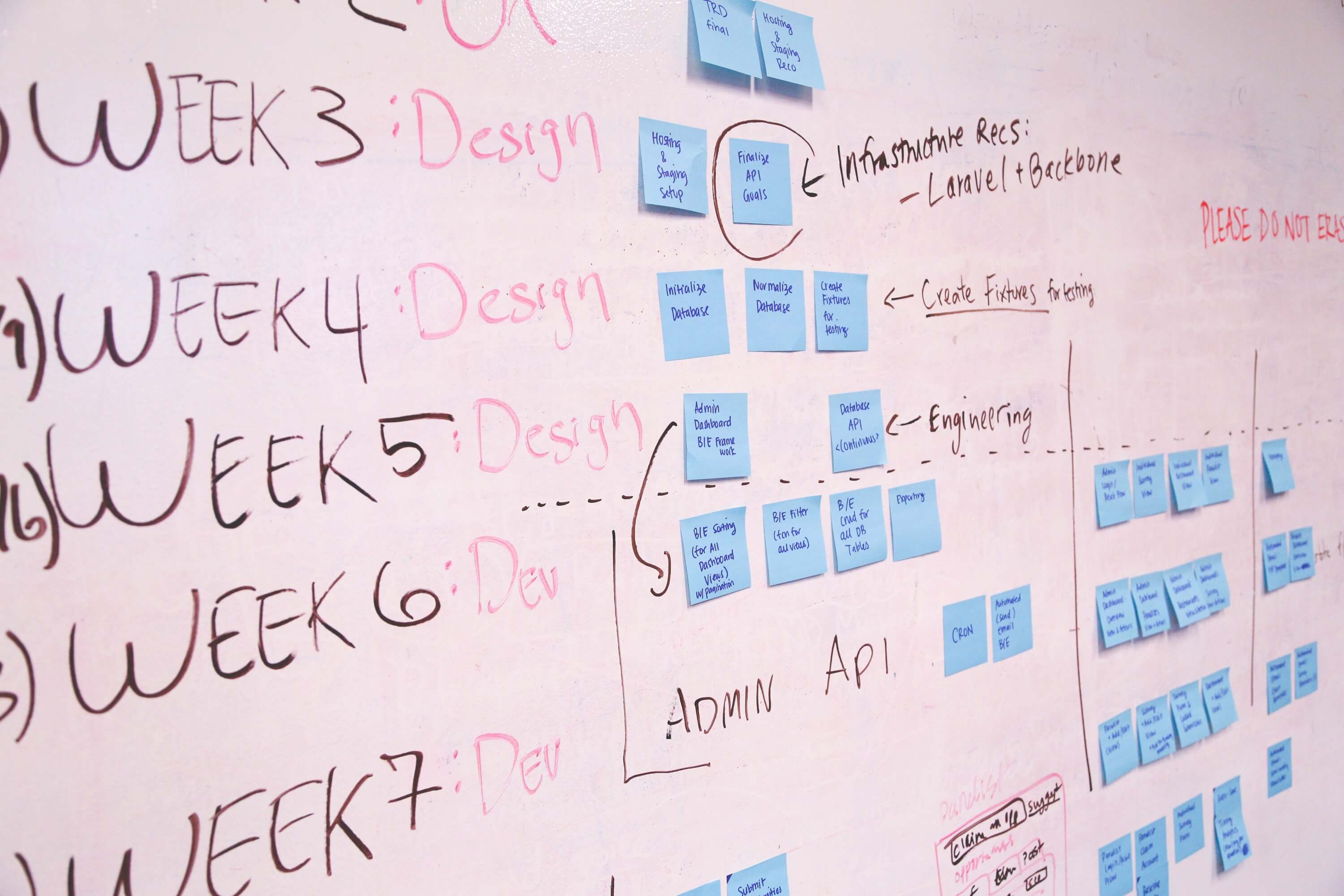Why Your Company Needs To Outsource Web Development Services?
Why Your Company Needs To Outsource Web Development Services?
Web development services are an essential part of creating and managing websites. Outsourcing web development services can provide businesses with cost savings, greater flexibility, and access to a wider pool of talent, enabling them to focus on their core competencies. Having a professional website is crucial for businesses to establish their online presence, build credibility and trust, improve customer engagement and communication, and boost their visibility and search engine ranking.
What Are the Types of Web Development Services?

Web development services refer to the activities involved in building, designing, and maintaining websites. There are various types of web development services, each catering to different aspects of website creation and management. Here are some of the most common types of web development services:
Front-end development: This type of web development involves the creation of the user interface and user experience of a website. It includes the design and coding of the website's visual elements, such as the layout, typography, and navigation.
Back-end development: Back-end development refers to the creation of the server-side functionality of a website. It involves coding the back-end logic, data storage, and processing of the website's content.
Full-stack development: Full-stack development is a combination of front-end and back-end development, where developers work on both the client-side and server-side of a website. Full-stack developers are capable of handling the entire web development process.
E-commerce development: E-commerce development is focused on building online stores, marketplaces, and other e-commerce platforms. It involves the integration of payment gateways, shopping carts, and other e-commerce functionalities into a website.
Content management systems (CMS) development: CMS development is focused on building custom content management systems, such as WordPress or Drupal, that enable website owners to manage their website content without requiring technical skills.
Mobile app development: Mobile app development involves the creation of mobile applications for iOS and Android devices. These apps can be standalone or integrated with a website.
Web maintenance and support: Web maintenance and support services ensure that a website is functioning correctly and that any issues are resolved quickly. This type of service may include security updates, bug fixes, and website backups.
Why Do You Need to Outsource Web Development Services?

One of the key benefits of outsourcing web development services is the cost savings. By outsourcing to a reputable web development company, businesses can save money on hiring in-house developers, investing in expensive software and hardware, and training employees. Outsourcing allows businesses to pay only for the services they require, which is often more cost-effective than hiring a full-time developer.
Outsourcing web development services also provides businesses with access to a wider pool of talent. A reputable web development company will have a team of highly skilled developers with a range of expertise and experience. This ensures that businesses have access to the best talent available and can benefit from the latest technologies and trends in web development.
Another benefit of outsourcing web development services is the ability to focus on core business activities. Developing a website requires a significant investment of time and resources, which can take away from other important business activities. By outsourcing web development, businesses can focus on their core competencies, such as sales and marketing, while leaving the technical aspects of website development to the experts.
Outsourcing web development services also provides businesses with greater flexibility. Web development companies can provide businesses with customized solutions tailored to their specific needs. This means that businesses can scale their web development services up or down as required, without having to worry about the overhead costs associated with hiring and training employees.
Why You Need A Professional Website for Your Business
With over 4.6 billion internet users worldwide, having a website allows your business to reach a much larger audience than traditional marketing methods. Your website can provide customers with valuable information about your business, such as your products or services, location, hours of operation, and contact details.
A Website helps build credibility and trust with potential customers. A professional website can provide customers with a positive first impression of your business, making them more likely to trust and do business with you. A well-designed website that is easy to navigate and provides relevant information can also help establish your business as an authority in your industry.
It also can improve customer engagement and communication. Customers can use your website to submit inquiries, request quotes, and even make purchases directly from your site. A website can also provide customers with valuable resources, such as how-to guides, product reviews, and customer testimonials, which can help build loyalty and increase customer retention.
It helps improve your business's visibility and search engine ranking. By incorporating search engine optimization (SEO) best practices into your website, you can improve your website's ranking on search engine results pages, making it easier for potential customers to find your business online.
How Do You Choose A Web Developer?
%20(1).webp?width=500&height=334&name=choose%20developer%20(1)%20(1).webp)
When looking for a web developer, it's essential to evaluate their portfolio. This will give you an idea of their skill level and the type of work they can produce. Look for examples that are similar to what you want to achieve for your project. You should also check their experience and find a web developer who has experience in the specific technologies and platforms you need. For example, if you need an e-commerce website, find a developer who has experience in building e-commerce sites.
Asking for references is another essential step. Ask the developer for references from their past clients. Reach out to them and ask about their experience working with the developer, the quality of their work, and their communication skills. Good communication is essential for any successful project, so look for a developer who is responsive, asks questions, and keeps you updated on the progress of the project.
Once you have chosen a web developer, it's time to plan your website development project. Start by defining your goals. Before starting a website development project, you need to define what you want to achieve with your website. What is the purpose of your website? Who is your target audience? By defining your goals, you can create a website that meets your business needs and achieves your objectives.
How To Plan A Website Development Project?

Creating a project plan is also crucial. Your project plan should include a timeline, milestones, and a budget. Be realistic about your timeline and budget, and make sure you communicate them clearly with your developer. Choosing a Content Management System (CMS) is also an essential step in planning a website development project. A CMS makes it easy for you to manage and update your website content. Choose a CMS that is easy to use and meets your business needs.
Finally, develop a content strategy. Your website's content is crucial to its success. Develop a content strategy that includes the type of content you will create, how often you will create it, and who will be responsible for creating it. A well-executed content strategy can help drive traffic to your website and engage your audience.
Best Web Design And Development Techniques

With so many different approaches and methods available, it can be challenging to know which techniques are best suited to your needs. In this article, we will explore some of the best web design and development techniques that you can use to create a modern and engaging website.
Responsive Design
In today's world, people use a variety of devices to access websites, from desktop computers to smartphones and tablets. A responsive design ensures that your website looks and functions properly on all devices, regardless of screen size or resolution. Responsive design techniques involve using flexible layouts, images, and typography, so that your website adapts to fit the user's screen.
Mobile-First Design
Mobile-first design is a technique that involves designing a website first for mobile devices, and then expanding the design to larger screens. This approach puts the user's needs first, as more and more people access the internet on mobile devices. Mobile-first design focuses on simplicity, clarity, and ease of use, ensuring that your website is accessible and usable on all devices.
Accessibility
Accessibility is a key consideration in web design and development. By making your website accessible, you ensure that all users can access and use your website, regardless of any physical or cognitive limitations they may have. Accessibility techniques include using appropriate color contrast, alternative text for images, and keyboard navigation, among others.
Minimalism
Minimalism is a design philosophy that emphasizes simplicity, clarity, and functionality. A minimalistic design approach can make your website more engaging and easier to use, as it removes any unnecessary distractions or clutter. Minimalism involves using simple layouts, typography, and color schemes, and focusing on the essential elements of your website.
Speed Optimization
Website speed is a critical factor in user experience and search engine optimization. Slow loading times can lead to higher bounce rates and lower search engine rankings. Speed optimization techniques include optimizing images, minifying code, and using a content delivery network (CDN) to speed up your website's loading times.
User Testing
User testing is a crucial step in the web design and development process. By testing your website with real users, you can gain valuable insights into how users interact with your website, and identify any usability issues or areas for improvement. User testing techniques include A/B testing, usability testing, and user surveys, among others.
Conclusion
In conclusion, web development services are essential for businesses to establish a strong online presence. There are various types of web development services, including front-end, back-end, full-stack, e-commerce, CMS development, mobile app development, and web maintenance and support. Outsourcing web development services can provide cost-effective, flexible, and efficient solutions for businesses to achieve their objectives while focusing on their core competencies. Moreover, having a professional website is crucial for businesses to improve their visibility, credibility, customer engagement, and search engine ranking. When looking for a web developer, it's essential to evaluate their portfolio and their experience to ensure they can deliver the type of work required.



